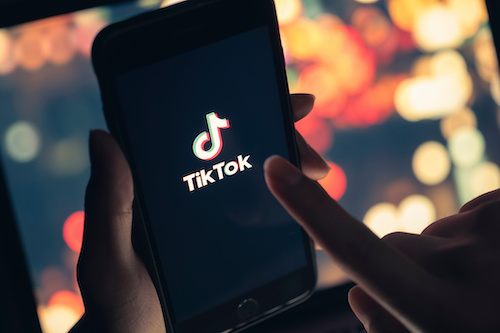Key points:
- Educators have a unique opportunity to create dynamic learning environments
- Don’t ignore the elements that make social platforms so captivating to young students
- See related article: How to respond to ChatGPT with inquiry-based learning
- For more news on edtech tools, visit eSN’s Digital Learning page
- Stay up to date on the latest trends about learning in the digital age
If you talk to 200 teachers around the country today and ask them to describe their challenges in the classroom, you’re likely to get 201 different responses. And that makes sense–as systemic as some issues facing our education system are, every school, class, and student is unique. Yet through all that, there is perhaps one constant, one shared experience that is as universal as the No. 2 pencil. TikTok. Yes, TikTok has become the new American pastime of millions and public enemy number one of many teachers, parents, and some lawmakers across the country.
Students today are more distracted and disengaged than ever, all while they’re spending an average of 95 minutes every single day on TikTok alone. Meanwhile, 80 percent of teachers across the nation are reporting critically low student engagement, signifying a lack of connection with the material, the methodology, or both. But TikTok, and social media more broadly, continues to capture curiosity and attention, and it’s not all just dance videos–Indiana science teacher @ChemteacherPhil commands an audience of more than 3 million followers on the app. Is there a lesson in that?
Instead of snuffing out the doom scroll at its source, educators should lean into it, learn, and apply takeaways to their curriculum.
No one is suggesting we add TikTok to the back-to-school supply list, but modern curriculum developers are watching and learning from TikTok to produce content that is more engaging–and individual teachers should, too.
In 2021, TikTok proclaimed that “relevance is the new reach.”
That’s what every social media company understands all too well–the more relevant a piece of content is to a user, the more likely they are to consume and engage with it. By integrating real-world content relevant to their students’ lives, educators can bridge the gap between theoretical knowledge and its practical application. Students can see and experience the relevance of what they are learning, which can have a profound impact on their motivation and comprehension.
There’s an entire school of thought on this. Phenomena-based learning involves leveraging real-world scenarios and observations in learning to help students better understand their environment and uncover the steps necessary to solve problems and answer complex questions. It can be as micro as a class observing a bag of popping corn or as macro as tying recent weather events to a discussion on climate change. Or, if you’re Maynard Kereke (Hip Hop M.D.), it’s using a viral Rick Ross video as a teaching moment about camels.
But the conduit is just as important as the content.
Variety is the spice of life and its classrooms. If traditional teaching methods reliant on textbooks, lecture, and rote memorization have proven anything, it’s that one size definitely does not fit all. The lesson for educators is clear: to truly connect with our students, we must diversify our teaching methods and keep the learning experience fresh. By embracing a multimedia approach, we not only cater to different learning styles but also tap into the inherent curiosity of our students. We do that by ditching the lectures and embracing experiments, multimedia, discussions, and hands-on activities that resonate with most learners.
Over time, this dynamic instruction cultivates critical thinking skills that empower students to view problems from multiple angles, discern between reality and fallacy, and evaluate the credibility of information from a variety of sources.
This leads to a culture of experimentation, creation, and inquiry.
When these approaches are brought together in the classroom by a teacher, it creates an environment where students feel encouraged to test ideas, make mistakes, and ask questions. Try, fail, learn, repeat. By fostering an atmosphere where trial and error are celebrated as crucial steps on the path to growth, we empower students to become active participants in their own learning journeys. Inquiry-based learning encourages students to ask questions, seek answers, and explore the world around them. It plants the belief that it’s okay to not have all the answers at once, that it’s okay to discover them, to piece them together using fragments of your own understanding and lived experiences. It’s a process of discovery, curiosity, and resilience. That is what it means to learn.
Let’s be clear – there are serious privacy, safety, and potentially even health issues with nearly every major social media product that require contending with. But to ignore the elements that make them so captivating to young students is to fail to keep up. When we create classrooms where students thrive, learning becomes an adventure. As technology continues to evolve, educators have a unique opportunity to create dynamic and effective learning environments. Taking a page from the TikTok playbook and replicating its best parts in the classroom meets learners and teachers in the middle while encouraging student curiosity, engagement, and success.
- 4 ways to encourage play in education - April 25, 2024
- CoSN IT Leader Spotlight: Lisa Higgins - April 25, 2024
- It’s time to pay student teachers - April 25, 2024

